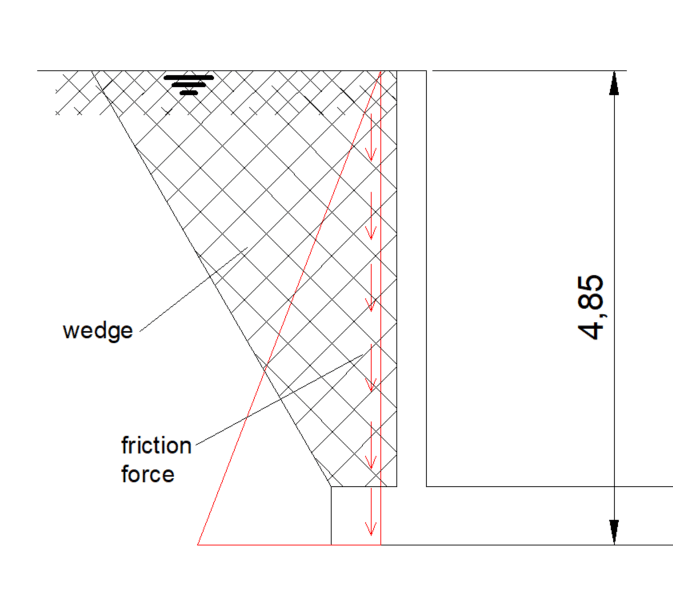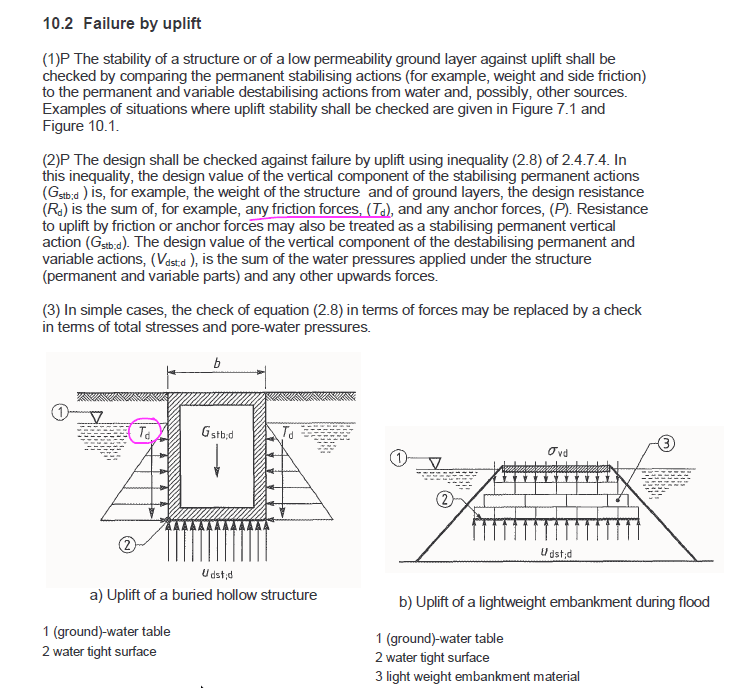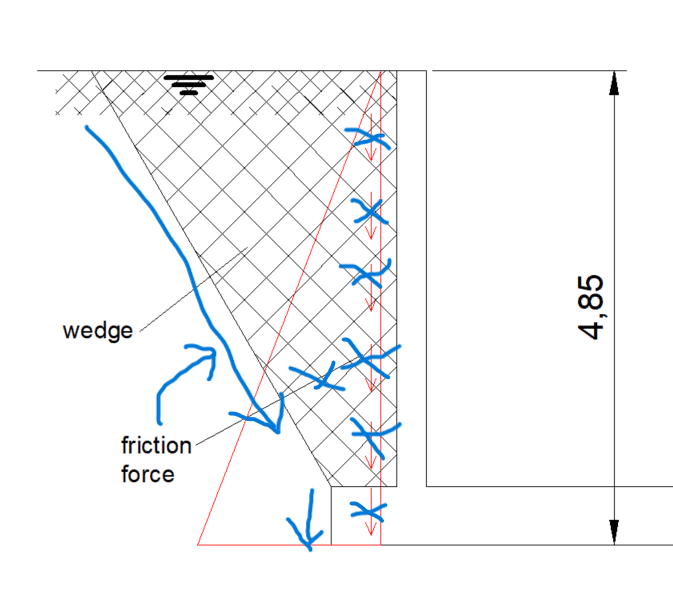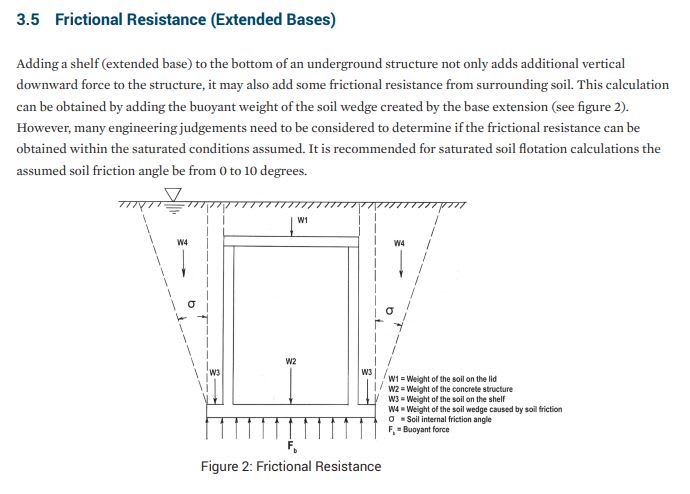Boy this takes me back. I haven't done one of these in quite some time (circa 2000, well, maybe a little in 2005 but that was for a golf course and I don't think it ever went live, plus it was this goofy multi-cellular tank, not awesome).
The friction along the length of the failure surface, I'd say, is typically neglected. It's also a friction force so there's special treatment in the ASCE code, and it's also inclined along the presumed failure angle, so it's not fully downward.
Second - the "passive uplift resistance" you're looking for the volume of a frustrum, times the soil unit weight. I have that somewhere but it's odd. Area at top, area at bottom and 4x area at mid height(?) times some dimensions. (
this is the wrong frustrum but you get the idea)
This one,
maybe.
The soil doesn't come out "straight up" but if you'd like, run it both ways and see how you feel. With a cohesionless soil (sand), you'd perhaps get the "straight up" soil case. I don't agree you are relying on compaction here. Soil has density, if it's compacted, the density is higher. Use the values that are intended from the 95% proctor compaction or whatever is being specified.
If you want a "normal people see this happen" you are looking for swimming pool uplift, or "popping out of the ground" seems to be the more common term, when the pool isn't filled due to high water table, (these things are "normally" done in shotcrete so they won't have the footing extension a WTP or WWTP will have (to develop the bars, to prevent catastrophic failure during a "water test", when empty and backfilled, etc.). They also have thinner cross sections (4"?) so they are more prone to "uplift."
Degenkolb can't spell buoyancy correctly, but here's their write up, use at your own risk.
If there's a flood at least some of the soil might be considered saturated, floods depend on either a) rainfall exceeding the infiltration rate (so the soil below is saturated somewhat but need not be not full depth), this produces runoff, probably Hortonian overland flow, in the stricter sense), or b) saturated soil full depth due to some kind of apocalyptic "it rained for 5 days straight" monsoon season sort of thing. Or the more obvious river flooding/ storm surge/ etc.
(so the resisting soil weight is thus net weight (at least partly) to resist uplift, not gross) but I believe it's more commonly presumed to be full depth, possibly due to a lack of sophistication on the part of the analyst, or a desire to be extra conservative given the consequences of failure (pipe rupture, tank moves up six inches, mat fails, boil water notice, wastewater leaks into the river and creates a boil water notice for five hundred miles downstream affecting millions, etc.
Alternately, if there is a pressure relief valve, that may change the loading). It would be abnormal for the water table to be fully saturated, a flood to occur, AND for the tank to be completely empty. It may be more commonly designed that way, but it doesn't feel like a rational load case.
Plus, if you are in a seismic zone or a flood zone, there's various standards that mandate freeboard (height of the tank wall above the base of the flood). Freeboard for a flood is to address changes in flood, level of development, sea level rise, river rise, etc, freeboard for seismic is to prevent the liquids sloshing out due to the ground motion (seiche waves?) The requirements are there for different reasons.
Regards,
Brian





